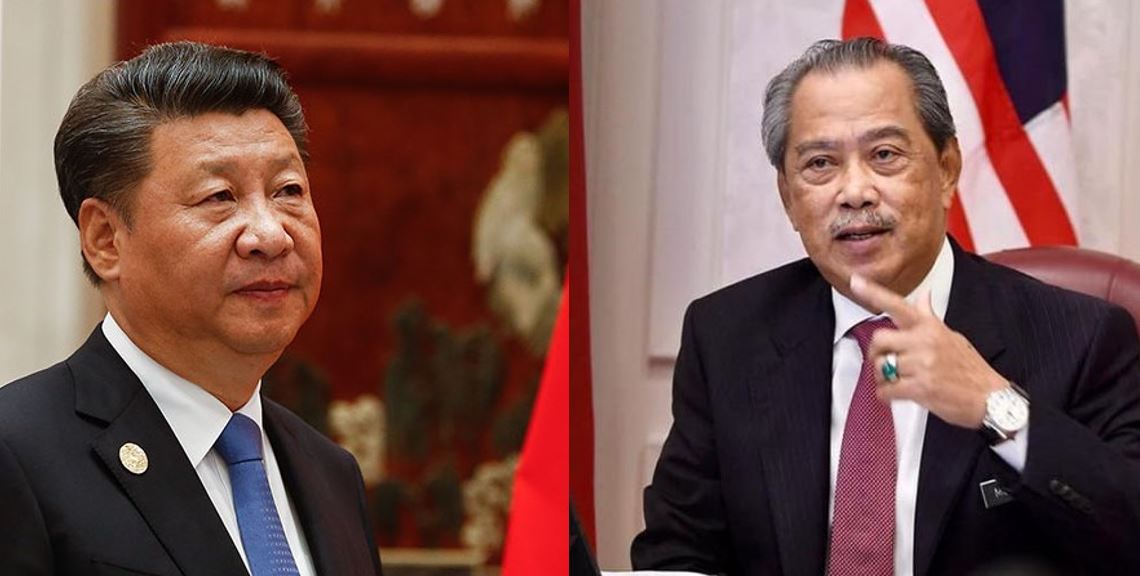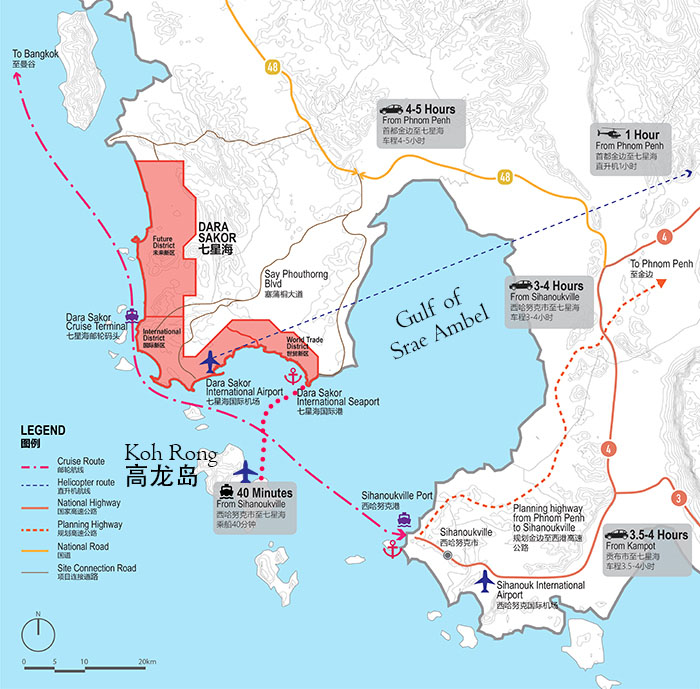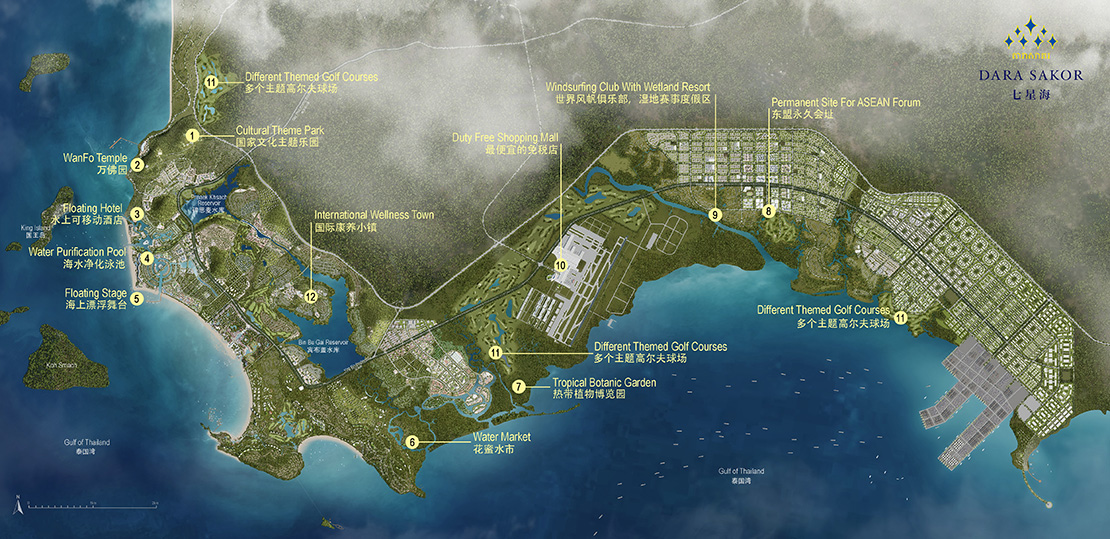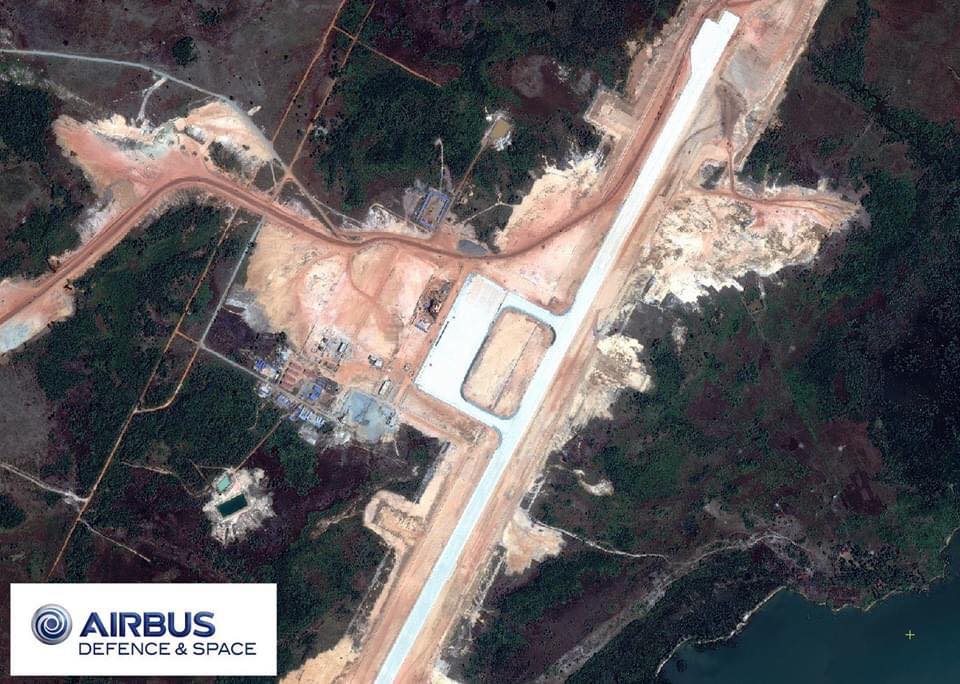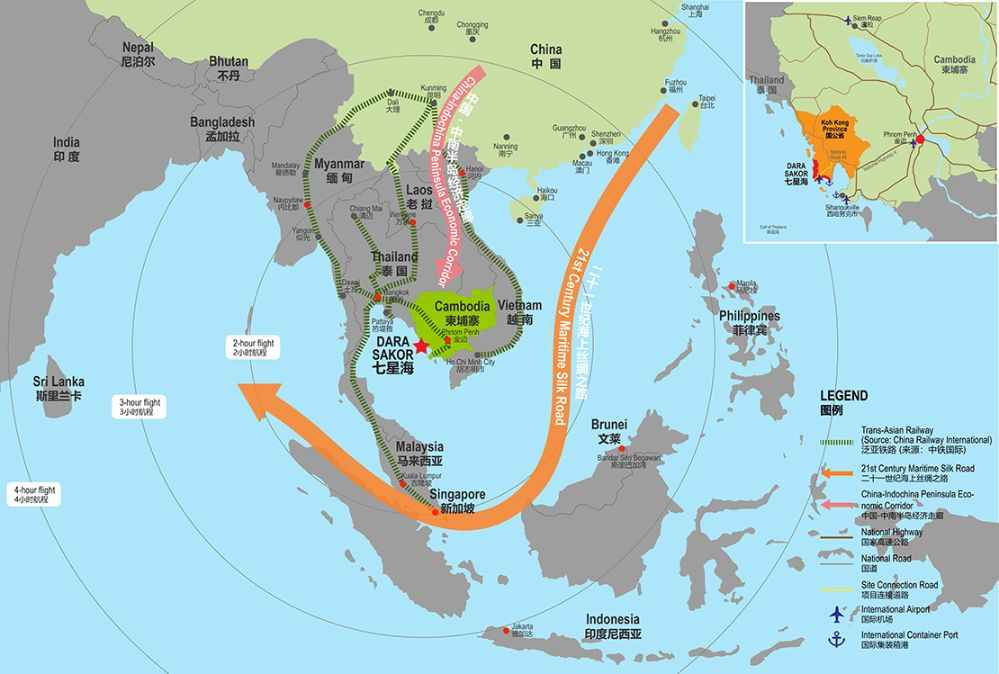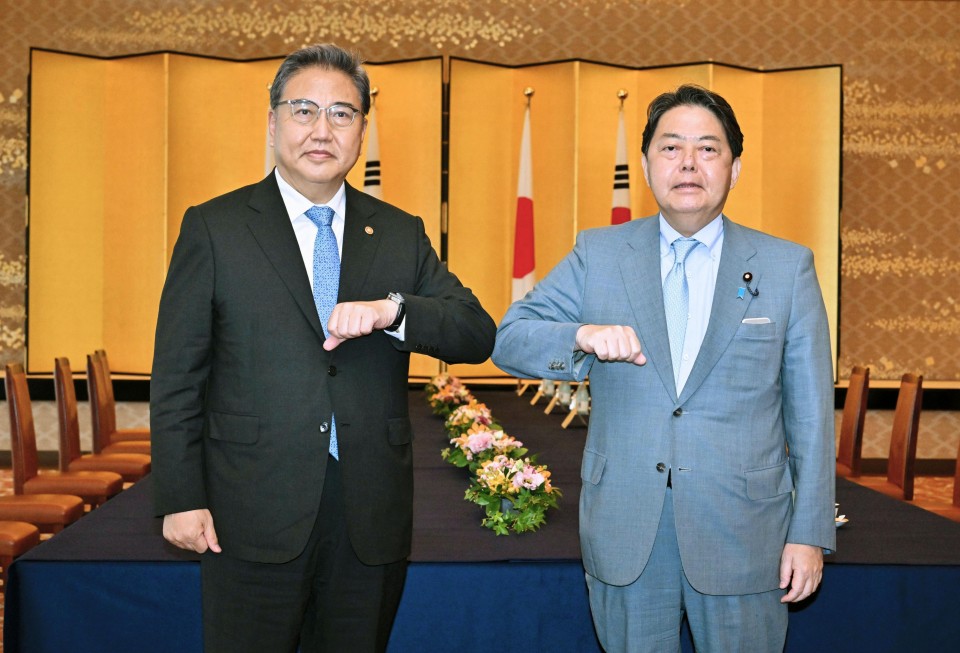@moderation, please delete my previous. Thanks.
(This is a correction to my post #189 in the
PLA-navy news thread, which talked about the Ream naval base in
Cambodia)
Let's summarise: The
Marine&Oceans paper I quoted, mentions the "renovation of the naval base" at Ream (southeast entrance to the Gulf of Srae Ambel). It repeats the WaPo(note1) of 06June: "
a new facility under construction at this base would be "exclusively" used by the Chinese Navy".
You might as well read the original (if you can call it that), the WaPo: "
China is secretly building a naval facility in Cambodia for the exclusive use of its armed forces (...) The military presence will be in the northern part of the Ream Naval Base (...).
[And to compare (the incomparable): "(...)
China's only other foreign military base at the moment is a naval facility in the East African country of Djibouti.(...)" [!]
"Incomparable" because the sat. photo that the WaPo reproduces shows that this "Chinese extension" of the naval base would only measure 0.3km2 (elsewhere I read: 3km2; I didn't measure, maybe a typo somewhere...)
Above all, the Ream naval base only has a shallow water harbour whose current jetty can only accommodate "patrol boat size" ships. Admittedly, AMTI//CSIS published in January(note2) about dredging works, ...but I am not convinced.
I maintain: the Ream/Djibouti comparison is outrageous. Moreover, the Cambodian ambassador replies: "
The renovation of the base is only to strengthen Cambodia's naval capacity to protect its maritime integrity and to fight against maritime crimes, including illegal fishing" (WaPo). Or (RTSch), a Cambodian official: "
Don't worry too much, the Ream base is very small (...). It will not be a threat to anyone, anywhere”. Whether you want to believe it or not.
But not everything in the WaPo paper is to be dismissed, however. For example: "(...)
a Chinese official in Beijing confirmed to the Washington Post that "part of the base" will be used by "the Chinese military". The official denied that it was for "exclusive" military use, saying scientists would also use the facility. The official added that the Chinese are not involved in any activities on the Cambodian side of the base. (...) The Chinese official told the Post that the ground station technology for a BeiDou satellite navigation system is located in the Chinese part of the Ream naval base.
BeiDou is China's alternative to the Global Positioning System (GPS) operated by the US space forces, and is used for military purposes, including missile guidance. The official had no direct knowledge of how the system was used.
According to a March report by the Pentagon's Defense Intelligence Agency, the Chinese military uses BeiDou's high-precision positioning and navigation services to facilitate force movements and the delivery of precision-guided munitions. China's global basing effort "is not only about power projection, but also about global tracking and space assets," said a third Western official. Cambodia's Ream project is "one of their most ambitious efforts to date (...)". This part is interesting, imo.
Otherwise,
Marine&Océans also mentions - but does not dwell on - the WSJ of 190722 (note3) which: "
reported on a secret draft agreement allowing Beijing to dock warships there [in Ream]". And that’s all, too bad.
Too bad because the WSJ also mentions
Dara-Sakor. That’s the point.
Not far away, just on the "other side", i.e. northwest entrance to the bay, Koh Kong province.
Since 2008 a Chinese project [UnionGroup; a 99-year lease (illegal under Cambodian law or constitution, I read)] of a resort (note4, promotional website of the project), with a surface of 36.000ha (!), spreading over almost 20% (!!) of the Cambodian coastline.
It is here:
(visual taken from the project's "publicity brochure"; for the record, Ream - not shown on the map - is just south of Sihanoukville)
And to receive the ferries full of Chinese tourists, naturally, a deep-water port must be created: "
The company's showroom in Phnom Penh features plans to build five-star resorts, golf courses, marinas, two container ports, high-tech industrial zones and a "new city" of luxury homes." (WSJ)
Port(s) capable of handling 10,000t ships, according to the NYT (dec2019, note5).
(same brochure)
… And it gets even better with the construction of an airport with a runway (the longest runway in Cambodia: 10,500 feet (WSJ)) capable of handling A380 or B747.
(2020)
The NYT says analysts have spotted "tight turning bays" along the runway, the kind used by fighter jets with holonomic gears.
In short, potentially dual-use infrastructure.
That's where it's at:
(still the same "brochure")
After the generalist websites, I went to consult some Anglo-Saxon "diplo" sites, such as
ForeignPolicy,
TheDiplomat, or
ResponsibleStatecraft (Quincy Institute).
Which, in order, headline and chapter: "
Washington should relax about the Chinese base in Cambodia Americans need to acknowledge their own inglorious history in Southeast Asia." (note6); "
What the Cambodian naval base brouhaha overlooks The establishment of a Chinese military presence in southern Cambodia would mark the culmination of three decades of misplaced US policy towards the country." (note7); and finally: "
Washington is freaking out, once again, about a possible Chinese base in Cambodia. There is no evidence of a military advance by Beijing, but that hasn't stopped the fearmongers from playing it up. (note8)
A focus on Ream, but not a word on Dara-Sakor…
All - in chorus - agree on: the harmlessness of the Ream naval base; that it will not change the US-China balance of power in the region; and on the heavy US liabilities in Southeast Asia (and Cambodia in particular).
In a sense, they cannot be proved wrong.
But if we accept the hypothesis that the PLA "could" eventually dispose of the Dara-Sakor infrastructure, this would bring the PLAAF and the PLAN much closer to the Strait of Malacca, accentuate Thailand's "encirclement", take Vietnam “in the back”, and complicate the defence of the North-Natuna islands (Indonesia).
As for India, the Andaman and Nicobar islands and bases would become much more vulnerable. Not to mention the whole of India's Bay of Bengal...
I'll leave the last word to our Australian neighbours, Feb.2020, with "slamming" (and quite outrageous, too)infographics:
notes:
/!\ my quotations are multi DeepLd (en-fr-en). Read originals for exact words.


